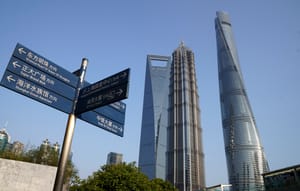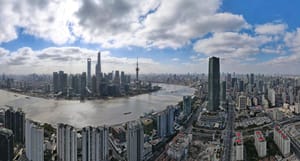By Ryan Yeh
At the dawn of the People's Republic of China, the nation faced the monumental challenge of dismantling the old order and building something entirely new. War had left the country in ruins, and reconstruction became an urgent priority. The Communist Party of China (CPC) assumed the immense responsibility of mobilizing the population and reshaping the country. Through a series of transformative measures, the socialist system was established, providing a foundational institutional framework for the nation's long-term development.
In economic development, China embarked on an ambitious industrialization journey. During this period, state power was highly centralized, with the government controlling all resource allocation. Social units were closely tied to the central government, and individual rights were temporarily subordinated to the national strategy of industrial catch-up. For instance, during the First Five-Year Plan, the government prioritized 156 key projects that laid the groundwork for China's industrialization. These projects spanned critical sectors, including steel, coal, electricity, and machinery manufacturing, enabling China to establish a relatively well-rounded industrial framework within a short period.
However, the development path was far from smooth. There were significant setbacks and missteps. During the "Great Leap Forward," for example, nationwide enthusiasm drove attempts to achieve rapid economic progress through unrealistic goals. In industry, the "Backyard steel campaign" mobilized tens of millions of people to produce steel using backyard furnaces, consuming vast amounts of labor, materials, and financial resources. In agriculture, overambitious slogans like "The more daring the people, the higher the land's yield" led to exaggerated claims of crop production. These inflated numbers disrupted the economy, creating severe imbalances in the national economic structure. Another major disruption came with the "Cultural Revolution," a decade-long turmoil that ended in 1976.
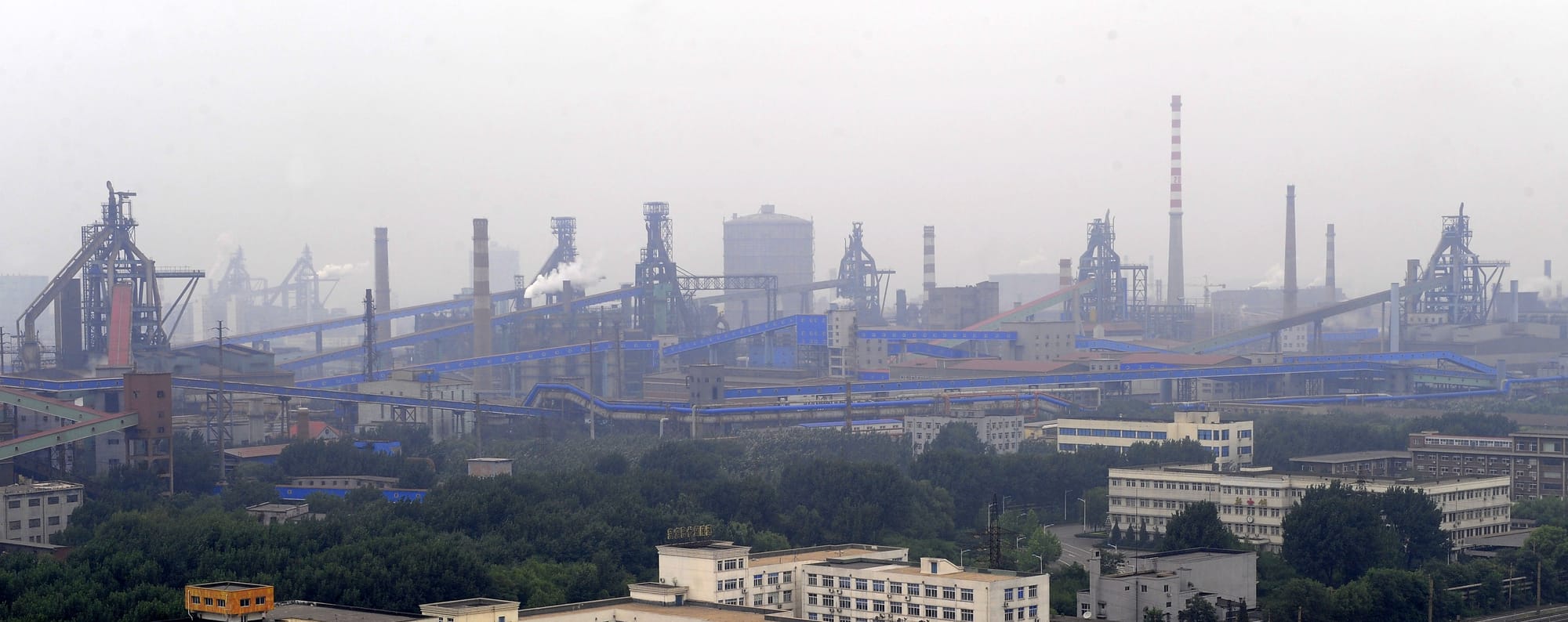
Despite these challenges, this period also saw the rapid establishment of a state-owned economic foundation and the creation of a relatively complete industrial and national economic system. These achievements provided a crucial institutional and economic base for China's future development. The rapid industrial accumulation in the early days of the People's Republic laid the industrial foundation for the revival of this ancient nation.
The 1970s saw significant changes in the international landscape with improved China-US relations and reduced Cold War pressures. In response, the central government strategically opted for peaceful development and economic globalization, marking a major shift in China's modernization from a state-led approach to one that activates the vitality of social entities.
Grassroots forces surged forth like a rising tide. The government began to decentralize power, continuously expanding the space for social autonomy. The market's dominant role in resource allocation and economic development became increasingly evident. In rural reform, the Household Contract Responsibility System greatly motivated farmers, revitalizing the rural economy and significantly increasing grain production, which helped alleviate poverty for many farmers. In urban areas, the gradual reform of state-owned enterprises expanded their autonomy, invigorating business operations. Simultaneously, various private enterprises sprang up, injecting fresh energy into economic development. The socialist market economy system began to thrive and mature under the synergistic effect of market dominance, social drive and state regulation.
As power shifted from the state to society, the relationship between government and market as well as that between state and society underwent continuous adaptive adjustments. The secular aspirations of the people were fully encouraged and respected, propelling China's national development from a focus on institutional construction to a deeper engagement in broader social development. Rapid economic growth brought profound changes to social structures, further enhancing the capacity for self-governance, which was translated into democratic demands. Throughout this process, China's democratic system evolved amid the waves of reform, and the Communist Party of China keenly recognized the changing times, transitioning from a revolutionary party to a ruling party. Its governance philosophy and methods continuously evolved, improving its ability to navigate markets and capital while enhancing the effectiveness of people's democracy. As foreign observers noted, China's reform and opening-up policy has unleashed tremendous economic and social vitality, representing a successful exploration of the country's development path.
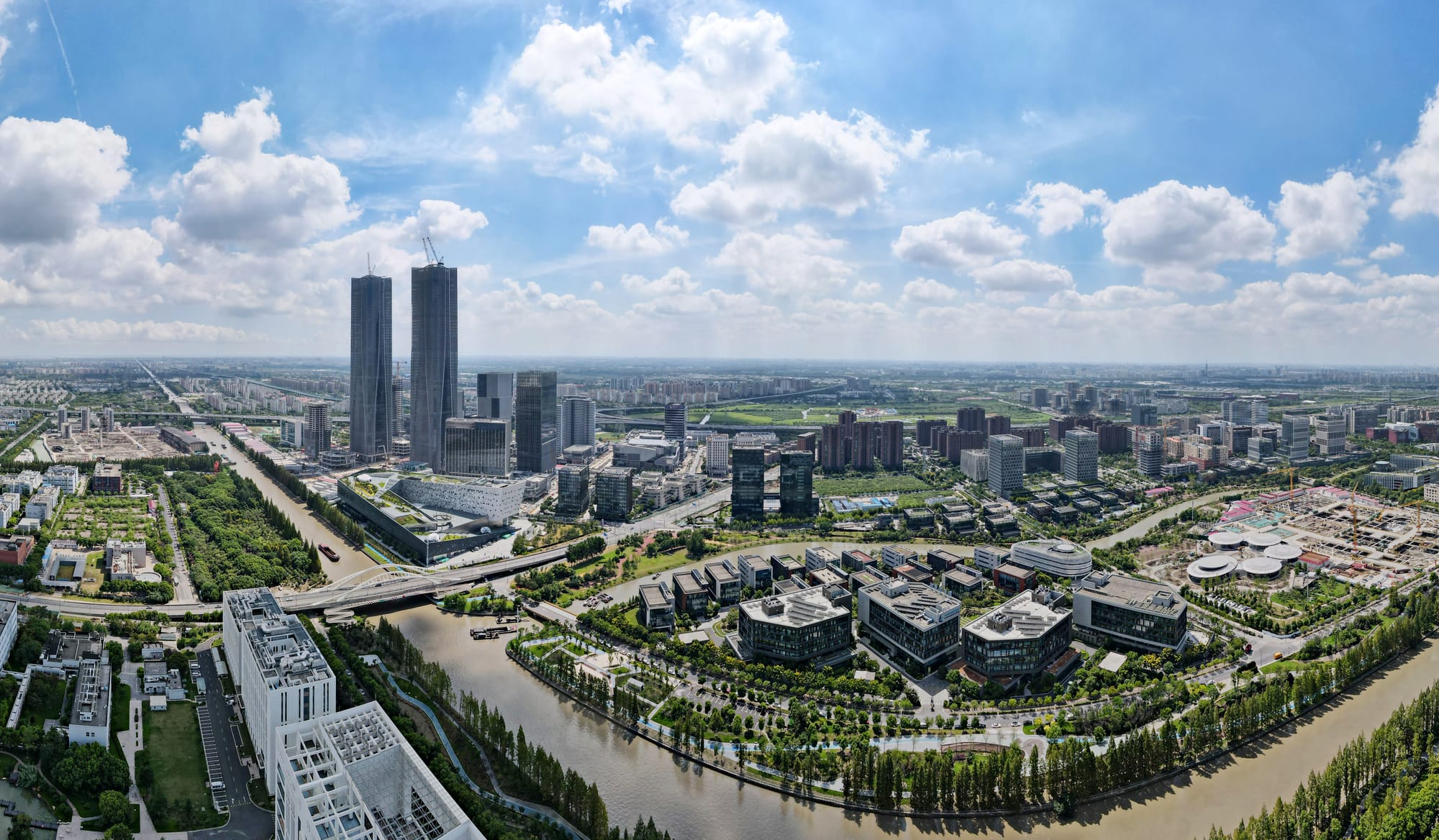
After the Cold War, especially since China became a member of the WTO in 2001, it significantly accelerated its integration into the global economic system. During this period, some issues, accumulated in the previous phase of rapid economic growth, began to surface. While the problem of "insufficient development" was largely addressed, challenges related to 'improper development' quickly emerged.
The swift economic growth brought numerous challenges. Adjustments in economic development and social structures intensified wealth disparities, leading to new social conflicts. The industrial transfer from developed countries resulted in severe environmental pollution, causing significant ecological damage. The growing challenge of managing such a large-scale economy made effective governance a pressing issue. Challenges arise in navigating the relationship between government and market, particularly in defining the boundaries of power to ensure market vitality and effective government oversight. Furthermore, ensuring that national governance maintains a socialist direction is crucial for the country's future. The previous model of "barbaric growth" is unsustainable; there is an urgent need for regulation and constraints through institutional and legal means. The distribution of social benefits also requires adjustment to promote fairness and justice. The Communist Party of China faces a significant challenge in balancing institutional integrity, social stability, and economic growth, testing its governance capabilities.
In this context, the "China Operating System" began to undergo adaptive adjustments. Developing a socialist democracy became a vital means of national governance. The introduction of the Theory of Three Represents further expanded the ruling party's representation and social base, enabling it to better advocate for the interests of the masses. The Scientific Outlook on Development was introduced to address the imbalances caused by rapid industrialization, emphasizing comprehensive, coordinated, and sustainable development. China has demonstrated strong institutional adaptability by timely adjusting its strategies to tackle various issues arising during its development.
Through systematic adjustments, socialism with Chinese characteristics entered a new era. The socialist system is continuously refined through ongoing exploration and practice. At this stage, China's modernization process has significantly shifted from the early focus on building institutions and developing the economy, to enriching the society, and now to fully centering on people. This marks a transition from merely emphasizing material production and institutional construction to prioritizing comprehensive human development.
The Communist Party of China initiated targeted reform to modernize national governance capacity and systems. Beginning with anti-corruption efforts, the Party has vigorously pursued its purification and upgrading. Since the 18th National Congress, the Party has embraced the mission of "offending thousands to benefit fourteen billion," addressing issues and restoring order through multiple approaches such as "striking tigers," "swatting flies," and "hunting foxes," leading to the downfall of numerous corrupt officials. This reshaped the Party's image and won public support, solidifying its governing foundation. For example, Zhou Benshun, Hebei’s former provincial Party chief, was severely punished by law for using his position to benefit others and illegally accepting large sums of money. The serious investigation of such cases has revitalized the Party's integrity and improved the political ecology.
The hallmark battle of this period is the fight against poverty. Millions of officials have gone deep into impoverished areas, working alongside poor communities. After years of hard work, nearly 100 million rural residents were lifted out of poverty, all 832 impoverished counties were officially recognized as having escaped poverty, and 128,000 impoverished villages had exited the ranks of poverty, historically resolving the issue of absolute poverty. This remarkable achievement has not only brought happiness to countless formerly impoverished individuals but also highlighted the Party's commitment to "seeking happiness for the people." International media have marveled at this success, reporting that China's achievements in poverty alleviation are a miracle in the history of global poverty reduction.
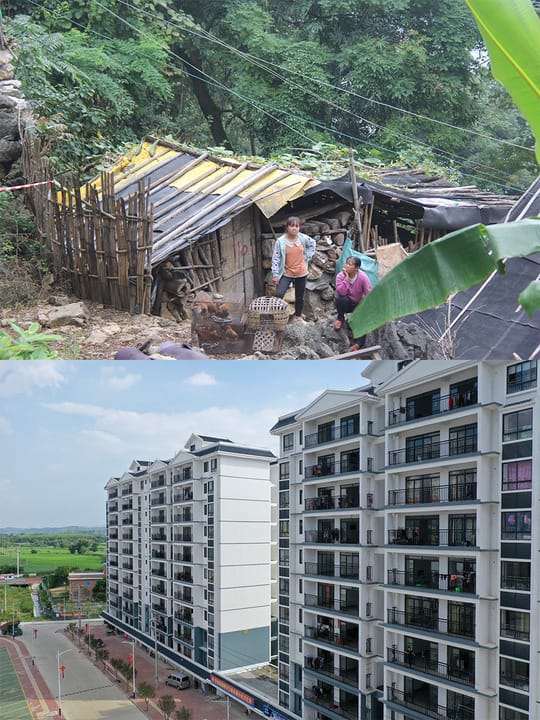
A new model guided by the new development outlook has been established, focusing on innovation, coordination, green development, openness, and sharing. In innovation, China leads the world in 5G technology, high-speed rail, and e-commerce. For instance, Huawei has made substantial investments in 5G research and development, securing numerous core patents and accelerating the global rollout of 5G networks, driving a transformation in communication technology. In green development, China actively promotes ecological civilization, with companies like BYD continuously innovating in the electric vehicle sector. Their electric vehicles capture significant market share domestically and are exported to many countries and regions, contributing to carbon emission reduction and climate change mitigation.
On the international front, China actively expands international cooperation guided by the concept of a community with a shared future for mankind. The Belt and Road Initiative has garnered positive responses from numerous countries and regions. Many infrastructure projects have taken root in countries along the route. For example, the China-Laos Railway has greatly enhanced trade and personnel exchanges between China and Laos, driving local economic development.
Through these efforts, China's national governance capacity and the modernization of its governance system have continued to improve. The "China Operating System" has been strengthened in terms of integrity, systemic coherence, coordination, adaptability, responsiveness, and openness, gradually evolving into a new form of human civilization characterized by the simultaneous development of political, material, social, cultural, and ecological dimensions.
Overall, the evolution of the "China Operating System" reflects a modernization journey that closely aligns with specific national conditions and accurately responds to the demands of the times. In the complex process of social transformation, China has created the twin miracles of economic development and social stability, deeply illustrating the Party's continually deepening understanding of the laws governing party governance, socialist construction, and human civilization. The two miracles undoubtedly signify the Party's achievements in governance and showcase the advantages of the institutional and governance systems behind the "operating system." China's successful experiences in national governance provide the world with a new development model.
If we compare national governance to an " system," then the leadership of the Communist Party of China undoubtedly serves as a powerful "central processor" that enables the system to run efficiently. The system always adheres to the core "people-centered" principle. When the people input commands reflecting their "pursuit of a better life," the system can quickly respond through its "democratic module," providing timely feedback and effective responses. Moreover, the system is strengthening its self-learning capacity, ability to upgrade with the times, and "open-source" characteristics, which grant it remarkable vitality and adaptability. China’s high governance quality largely stems from these features.
The leadership of the Communist Party of China occupies a central operational position within the "operating system," providing clear strategic direction and powerful aggregation capabilities. The truth that "the key to managing China's affairs lies in the Party" has been confirmed through long-term practice. For a vast and complex economy like China, with its large population and diverse regions, effective leadership is essential for determining development direction, allocating resources, coordinating multiple interests, and addressing various challenges.
The Party's leadership acts like an invisible yet resilient web, tightly weaving together the nation's various elements and resources. This ensures that China maintains stability and unity amid significant social changes, preventing disarray and fragmentation and providing a solid institutional guarantee to leverage the unique advantage of "concentrating resources to achieve major tasks." American political scientist Samuel Huntington pointed out that a politically modern organization is a key force for developing countries in driving and stabilizing the modernization process.
The advantages of the Party's leadership are vividly reflected across many fields. In poverty alleviation, the Party has formulated detailed plans, assigning responsibilities at every level and gathering various forces, ultimately achieving the monumental goal of eradicating absolute poverty. In responding to the COVID-19 pandemic, the Party made swift decisions, orchestrating a united national response. Party organizations and members at all levels took the lead, efficiently managing the allocation of medical resources, community prevention efforts, and vaccine development, thereby maximizing the protection of people's lives and health. Scholar Zheng Yongnian asserts that China's significant achievements in poverty alleviation, pandemic response, and economic development are not only due to a strong economic foundation but also fundamentally supported by the Communist Party as the "pillar of governance."
Democratic governance is a crucial component for the smooth operation of the "operating system," endowing it with the capacity to respond effectively to the needs of the people. China's national governance firmly centers on the people, and the essence of whole-process democracy is that "the people are the masters of their affairs." This is not merely an abstract political right but a tangible practice in the governance process. For a large society like China, it is also a requirement to awaken public awareness of responsibility and fully mobilize the collective wisdom of the populace.
Take China's healthcare reform as an example. This extensive reform, which covers the largest population globally, has advanced efficiently and equitably due to a democratic and scientific decision-making system that promotes coordination from top to bottom. The central government has clearly stated the political commitment that "there can be no overall well-off society without universal health," providing direction for healthcare reform. Local governments have boldly innovated based on their actual circumstances. For instance, the healthcare reform in Sanming, Fujian, effectively reduced medical costs and improved service quality through integrated reform of three sectors—medical services, medical insurance, and pharmaceuticals. The central government then allocates resources based on local experiences and promotes successful practices nationwide, benefiting more citizens. In this social governance model, where everyone is responsible, experiences gained at a "point" can swiftly be shared across the "plane." Exchanges and validations of experiences between different regions continuously foster higher levels of understanding and governance wisdom. This cyclical process of continuous reform and development has gradually formed a unique democratic governance efficacy with Chinese characteristics, providing strong adaptability and institutional resilience for Chinese society to navigate various changes. China's whole-process people's democracy demonstrates strong vitality and high execution efficiency in national governance practice.
The Middle Path, which emphasizes balance and moderation, represents the philosophical essence of the "operating system." In today's world, integrated development is the trend, and binary oppositional political thinking is out of step with time due to its lack of inclusiveness, which can easily lead to insularity and internal strife. Conversely, China's dialectical and unifying political wisdom exhibits greater flexibility and stability in a rapidly changing world.
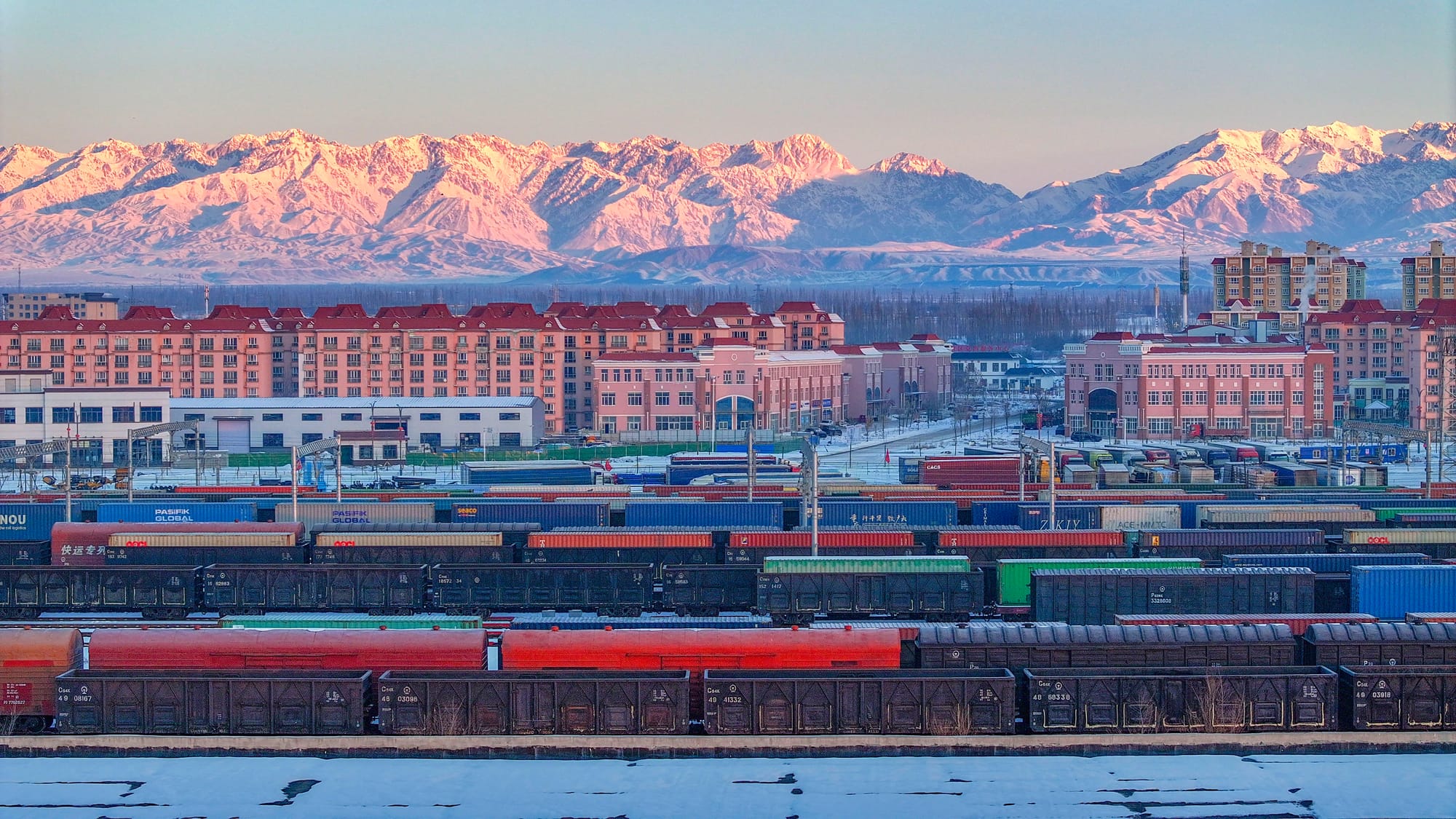
The success of China's reform and opening-up, which has shaped its current achievements, lies in its unwavering commitment to liberating thought and seeking truth from facts. In navigating complex relationships between government and market, freedom and order, rights and power, equity and efficiency, as well as empowerment and enablement, the Chinese government skillfully balances reform, development, and stability, striving to find the optimal point of the Pareto principle and maximizing the welfare of the people. The establishment of a socialist market economy in China represents a significant institutional innovation that breaks free from binary oppositional thinking. The Communist Party of China adheres to the principle of seeking truth from facts during the reform and opening-up period, and the achievements of contemporary China vividly reflect this spirit. For instance, in economic development, China fully leverages the decisive role of the market in resource allocation, allowing market vitality to flourish, while also effectively utilizing government functions to implement scientific macro-control, thus avoiding the negative impacts of market failures and achieving sustained healthy economic growth.
The "open-source" characterized by openness and inclusiveness is the key to the "operating system's" enduring vitality. A system can only maintain its vigor and liveliness through continuous energy and information exchanges with the outside world. Historically, the Chinese nation declined due to isolation and stagnation; today, it thrives by adhering to reform and opening-up and embracing innovation.
China remains steadfast in its open policy, actively integrating into the tide of globalization. Throughout this process, it continually enhances its ability to "swim" on the international economic stage, seizing development opportunities and expanding the "cake" of mutual benefit and win-win cooperation. Simultaneously, it upholds the traditional Chinese worldview of harmony among civilizations, enhancing its compatibility with other systems. The Belt and Road Initiative exemplifies this grand practice, aiming to strengthen policy communication, infrastructure connectivity, trade facilitation, financial integration, and people-to-people bonds between China and participating countries and regions. By constructing infrastructure projects, including the China-Thailand Railway and the Hungary- Serbia Railway, it promotes economic cooperation and cultural exchange among countries along the routes. Through ongoing civilization exchanges with different nations and regions, China is evolving and upgrading, collectively advancing the building of a community with a shared future for mankind. China's open policy injects strong momentum into global economic growth, and the Belt and Road Initiative provides a new model for international cooperation.
Water has a source, and thus its flow is perpetual. China's people-centered governance system is deeply rooted in the fertile soil of its excellent traditional culture. It has continuously evolved and shaped itself through long-term revolution, construction, and reform. The high governance quality it displays is no coincidence. China's explorative practices provide valuable insights to tackle the contemporary challenge of "governing large countries" and instills strong confidence in developing countries to break free from the Western notion of modernization and resolutely pursue their development paths. The world is diverse and should embrace various forms of civilization; the path to modernization is multifaceted. China's "open-source" intellectual wealth is bound to shine uniquely in the global development.
Ryan Yeh is a Beijing-based observer of international affairs. The views don't necessarily reflect those of BeijingReviewDossier.



